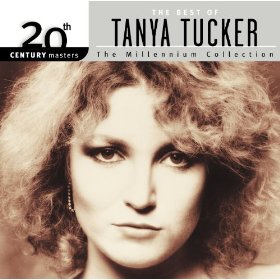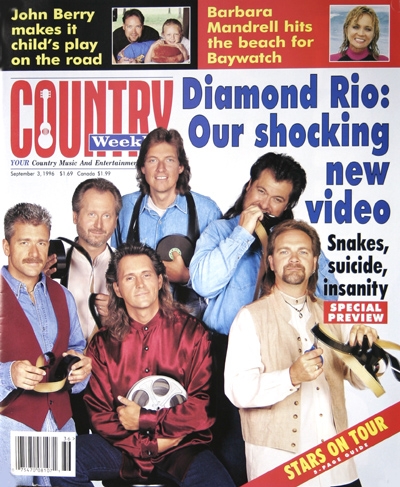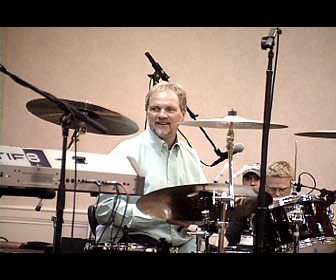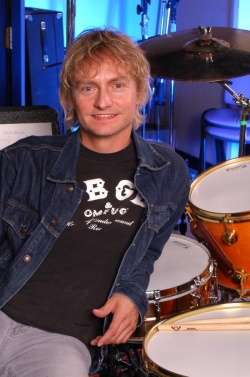originally written 9/99. Documentation of two recording artist tour gigs that I did in the late nineties and what I think is necessary for being prepared.
1. Preparation
I do a lot of work as a "sub"; a pinch hitter". I and a pool of other drummers that I share gigs with in Nashville have honed certain preparation skills to the point that we can guarantee an artist that we can come in with little or no rehearsal and play the parts right, catch all the cues and make the artist feel at ease. There are two gigs that I am presently preparing for. One is a Tanya Tucker gig that I am subbing for fellow drummer Steve Ebe who also plays with Kim Richie, Webb Wilder and used to play for the Dixie Chicks. The other gig is subbing for Brian Prout, drummer for the country band Diamond Rio, while he is recuperating from scheduled carpal tunnel surgery. Ron Ganaway was scheduled to do this but had conflicts with his regular gig with Steve Wariner so he referred me. (these gigs were in 1999).
Both acts are major country music recording artists who have sold millions of hit records. I am preparing for both shows at the same time even though they are several months apart. The Tucker gig is 5 days away with one rehearsal tonight and the Rio show starts in six weeks with no rehearsal. I am working on both way ahead of time because I never know when other work may come in that would squeeze my schedule and make it hard to do the work later.
I started on the Diamond Rio work about three weeks ago with live gig cd and a song list. I charted about half the songs to get a feel for it and then met with Brian Prout, the regular drummer for whom I am subbing, and we listened to the show cd together and talked it down. I had seen Diamond Rio once and had a sense of how their show ran. I was also familiar with their music from the radio. Brian pointed out certain visual cues from other players that would happen and we also discussed certain fills that he played. I try to mark which ones are "signature" or "cue" licks that the band will want to hear every time. We played "air drums". He is a very "showy" player and part of the job for me is to copy his style to some extent, so my charts are more transcribed (detailed) than usual. I must mention here that I am not a good memorizer. I hear so many songs during the course of a year that I can not memorize them, so I am very chart dependent. Part of this problem is that I don't try to memorize the lyrics. That would be helpful, but not in my nature. I went to a Diamond Rio concert here in Nashville a week ago. This is all the work I have done on this gig so far. I have committed to Brian for three months; November thru January for the dates that are on the books and whatever else might come in.
The Tanya Tucker gig is a one off, but I will be called to do it again if I do a good job, since she uses a pool of players, so I prepare for it as though I were going out for 200 dates. There were 18 songs to chart for Tanya. I am charting them from a videotaped concert with Pat McDonald on drums, the original recordings, and a live cassette tape with Raymond Massey on drums. I also have Steve Ebe's tiny, tiny index card charts that I am referring to, but not using since I can't see them well. I am writing these charts as a "book" so that other drummers can use copies of it in the future.
I started charting three days before rehearsal at my in-laws' house in Ohio, on the plane the day after, and then at home the next day. I contacted the first call drummer, Steve, and the band leader again on this morning of the rehearsal to ask detail questions that came up and to confirm rehearsal times and just to reassure them that I am on top of things. This is a very important part of subbing; lots of communication. I have found that you usually don't get all the info you need from the first meeting. I found out on this third call that I am supposed to bring an "unplugged" kit for the acoustic set. First mention of it! There are also three other sub players on this gig, so I want to make sure that no one has to babysit me. The charts. I know this rehearsal will be a run through of the show with basically no stops or rehashing of parts. Any corrections will be noted but probably not rerun. The artist may or may not be there.
My charts are not transcriptions, but sketches or cheat sheets. I start any new verse, chorus, intro, etc. on a new line so that I can see the song form running down the left side of the page; I,V,C,I,V,C,Solo,B,C,C,ending. I write one measure of the basic groove for each section, and then a big number for how many measures that groove is played, no repeat marks. I don't write in any obvious fills, say, at measure 4. I'll just write "fill at 4". If there is a fill at the end of the verse, I'll write "fill" at the end of that staff, unless it is a "signature, cue or unusual" fill which I will write out note for note. My concept for charts is the cleaner the better. The chart is a road map and serves to jog the memory. If there is an ensemble figure that all the instruments play, I usually won't write what the drummer played but rather rhythms above the staff, big band style. If there are actual measures that need to be written out, I number them underneath. I always leave room on the chart to write new cues from rehearsal and try to leave open space on each staff to write in arrangement changes to be rewritten later. At the top, there are tempo markings, style markings (straight eighths, hard shuffle, etc.) and lots of words about visual cues ("ending cued by Elvis Kick", etc.).
This is the most important stuff to me; the football play calls; who is the quarterback at any given moment; what or who am I supposed to be looking at on stage so that I don't screw up? The rehearsal is tonight after a recording session I have scheduled this afternoon. I am programming tempos in my metronome right now and practicing my "it's all about you, babe" smile :-) . Next installment will describe the rehearsal. The leader just called and said I couldn't bring a student I wanted to bring because the artist gets skittish with too many new faces. No problem. That's the politics of dancing. Now I have to go buy a new triangle for one damn song in this show. There goes my rehearsal pay.
2. the rehearsal
This is a rehearsal at the Nashville Studio Instrument Rentals (SIR) which is a very nice rehearsal complex with full multi channel monitor systems and good acoustics. I arrived about 45 minutes early and set up my little SonorLite drum set since the rehearsal didn't pay cartage. Other pieces of gear I brought were The Roland TD-10 (the V-Drum brain) for the metronome, a pair of headphones, a light for the music stand, a Beat Bug metronome which I didn't use, and a Walkman cassette player. This rehearsal paid $75.00 for three hours which actually went for four. Downbeat was scheduled at 7:00 PM. The gig is paying around 300 to 350 for the first time; sub pay.
The cast of characters; Bob Williams, band leader, elec.and acou. guitar and mandolin, vocals Jay Weaver, electric bass, and double bass Lex Browning, acoustic guitar, fiddle, vocals, Bryan the road manager, Mark the SIR monitor guy, No Tanya Tucker (the guys are faking her vocals). The rest of us were subs; Stephen Byram, keyboards and accordion, vocals, Mike Holder, pedal steel guitar and Dobro, Me, drums, triangle, stupid grin. I had played with Lex Browning and Stephen Byram before. These are all top notch pro players so the rehearsal went very smoothly especially since Tanya wasn't there (nothing against her. It's just more relaxed when the boss isn't around, ya know?)
Technical difficulties made getting the monitors set up take a lot longer than it should have so we didn't really get started until 8. The first tune went pretty smoothly. I discovered by the 2nd tune that a lot of the tempos had been relaxed since the videotape that Pat McDonald had played on, so I had to change metronome markings on my charts back closer to album tempos. I didn't have a tape of recent shows so there was some guesswork in charting. The band played together well and the bass player was smiling, which is always a good sign, so I settled into a good rehearsal mood (rare for me. I don't particularly like rehearsals).
The third tune is supposed to be an immediate count off from the end of the second one (a quick "segue", which is an Italian term meaning don't pick up your beer just yet). Since I have a hard time remembering tunes, this is where my charts are lifesavers. I will set the metronome during the 2nd tune, count off the third tune, play verbatim what is written on my chart and won't even recognize the tune until halfway through the 2nd measure. By this point we are getting through the tunes very nicely with a little discussion about how certain ritards feel, starts and endings, etc. We go through a four song "unplugged" set where I play a half kit with brushes that will be set up downstage.
Several songs have been shortened by a verse and chorus since the time of the video tape that I based my charts, so I scratch them out on my charts. Bob Williams, the new bandleader is very relaxed and pleased with how it's going. It's obvious that we won't have to run the show a second time unless Tanya shows up which may or may not happen, so we take our time getting things right, mostly talking before and after playing the tune I get a little bogged down in the middle of the set list with arrangement changes and take the time to alter my charts to reflect some arrangement cuts.
I never hesitate to ask for time in rehearsal to write in what is necessary on my charts. Some players might get a little impatient with me, but I figure it's better to take somebody's time now and get it right than to depend on my memory during performance and have question marks and terror in my eyes because I can't remember the arrangement changes. We ran only one tune all the way through twice. About half the tunes required replaying some ensemble sections, or trying a chorus or ending again. Jay Weaver, the bassist, was extremely helpful in pointing out key rhythm figures that I missed in charting. There are some little things that I note that may seem insignificant, but are very important on the gig when so many things are happening at once.
I have to start a tune in a medley on triangle with just enough time to pick up the beater. I bought one of those Rhythmtech triangles on a stand for this but I sat it in the wrong place and had to play it with my left hand when I needed to be playing it with my right, so I note this on my set up sheet which I put at the front of my chart book. It's obvious that I am very anal about this chart book, but I feel that this is the secret of being prepared, and so far it has kept me working. I keep a three ring binder notebook of every gig I play that might happen again not only for myself but for other drummers who might sub it for me. In each book I have in this order: A cassette tape of the songs and a pencil in the front cover pouch: the set list; a set up sheet with details about what might be different in my set up for that gig (mounted tambourine, extra snare, triggered sounds, specialty sticks, etc.); then the charts; tour iteneraries in the back cover pouch.
I keep a walkman in my luggage so I have everything I need to work on a show on the bus, plane or in the hotel room. This notebook and its organization gives me the confidence I need to pull these kind of gigs off with authority. Something almost always goes south on a gig, though. There is always something that was not covered in rehearsal. That is all that is left to chance at this point. That's where the stupid grin comes in :o) ! I actually look forward to catching that kind of stuff and making a save because I'm prepared with the bulk of the show. I'm looking forward to this show because Ms. Tucker has a great song repertoire and the tunes are very musical and varied.
The bandleader called me this next morning and let me know he'll be taping the show before the one I play, so I'll have a listen to the guy I'm subbing for, Steve Ebe. He also thanked me for doing my homework. See? My advice about this part of subbing, the rehearsal, is to be so prepared that you are relaxed and make every one else feel relaxed and relieved that they are not going to have to worry about the "new" drummer. Erase every question mark you can. Don't ever assume that any question you could ask in rehearsal would be too stupid. Write everything down and don't depend on your memory. Don't have equipment problems. Show up on time. Don't try to impress anyone. Just doing your job is impressive enough. .
3. The gig
What's different about being a sub drummer is that you have to be a good Indian" and a "chief" at the same time. Sound check. This concert is in a huge 4000 seat pavilion room at the Lady Luck Casino in North Mississippi, just below Memphis.
The crew loads in around noon, unpacks the drums and I tweak them up so the sound crew can set up microphones, etc. Sound check is at 4:00 and goes pretty smoothly. There is an excellent sound system and crew on this gig and the room sounds good. In my monitor, I opt for just kick drum and hi hat, acoustic guitar, bass and Tanya's vocal. I haven't had to deal with any line of sight problems on this stage, but it is always important to make sure that you are in good eye contact with everyone.
We end up rehearsing the show again at sound check. The stage is such that the extra "unplugged" kit I was asked to bring won't be practical, so that's one less thing I have to worry about. I was given a tape of the preceding night's show and had listened to it in my room, making a few minor notes here and there. My main concern at this point is trying to keep any "dead air" or "waiting on you" moments from happening, so I pay close attention to the songs that are "segued".
The way I arrange these in my chart notebook helps. If two songs are medleyed back to back with only enough time to check a metronome marking, I place them face to face; song #1 on the left side, song # 2 on the right side, and treat them as one song or performance. This eliminates page turning. I also use these to write the singer's verbal cues on.. I triple check my equipment, especially things like making sure the metronome and other electric cords are not in danger of becoming unplugged, making sure the brushes, sticks and mallets I will use are in the right places in the stick bag, etc. We rehearse for two hours and tighten up endings, ensemble figures, etc., and deal with a little more sound system tweaking.
We are called to a small meeting after rehearsal, since there are three subs on the gig, about procedures and how to "hang". People from management and some of Tanya's family are at this gig, including her three month old daughter, so we are basically to stay out of the way, not hang around stage after the show, and just generally keep a low profile. Every gig has its own interpersonal dynamics and these are just as important as the musical aspects when you are subbing. This is where being a "good Indian" comes in to play.
Showtime: The show goes very well; great, in fact. Tanya is a consumate performer and I'm up about playing all those cool songs she's recorded and listening to that controlled whiskey voice of hers. There is nothing like playing with a great singer. Tanya does a lot of "talking to the audience" so I have plenty of time to prepare between many songs. I'm getting tempos from the TD10 drum machine with a pair of headphones laying by it with the volume all the way up. I turn up the fader for a few seconds to hear it, turn it down, then keep a tap on my leg with my right stick, waiting for the cue from Tanya to start the song. When I click off the song, I hold the sticks high above my head so every one on stage can see them well and I count very loudly, and turn my head to either side of the stage so that everyone on the right and left can hear me. This is the first moment in which you can establish authority and put the artist, the players, and the audience at ease. Everybody loves a good drummer and they can usually tell how good you are going to be from those first stick clicks. It might seem out of place in some situations or songs, but I play it safe rather than sorry.
I want the band to start very together on every song, so I am loud and obvious with the count off. In the first verse of the song, I'll check the tempo read out on my Beat Bug (tachometer) which is triggered from the snare to see if my tempo is steady. These are things I've been doing for a while and they have become second nature to me. I struggle with tempo markings. I tend to disagree with some singers about tempos. My playing style is very relaxed but with a positive tension that creates excitement. Many singers want to take songs at tempos considerably faster than the original recordings because they think it builds excitement. What it actually allows them to do is to "move" faster and be more exciting visually, but generally their singing phrasing suffers.
There were two sets of tempos to choose from on this gig; Original recordings tempos and show tempos that were 2 to 5 beats per minute faster. I decided to take the first song, which was a hard shuffle, at the original tempo and see if she dug it. This is where we had rehearsed the songs. It worked. We stayed at the more relaxed tempos and she grooved through the whole night. The band was relaxed and everybody dug in and played with a lot of expression and feeling. Now, it could have gone the other way. Her in-ear monitors could have been lousy, the crowd lackadaisical, etc., any number of things that would cause her to turn to me and signal me to "pick it up", which I would have done dramatically and keep that vibe for the rest of the show. But the gods were with us tonight. I had never talked to Tanya about this, but the bandleader mentioned it, suggesting that I go with her tempos on the spur of the moment.
I usually try to find a spot in each song where I can play with one stick and flip to the next chart with my left hand to stay ahead of the game. I look for tempo marking which I might go ahead and scroll to on my drum machine if I can, verbal cues, and stick changes. It is somewhat of a balancing act between reading and not reading on these sub gigs.
You don't want to "look" like a sub, but it can't be helped in many situations. I try to make a little bit of a show out of all that I have to do with the click and the book and catching visual cues, etc. Some of the audience get engrossed waiting for you to mess up. Some pay no attention to you whatsoever. If the lights come on full blast on stage, I usually try to keep my eyes off the chart and on the stage or audience and do my part in "entertaining". But, the most important reason to keep your head out of the book is to communicate visually with the other players in the band. This was one of those "together" shows where I read everything down and made virtually no mistakes.
There were a few loose moments but nothing that raised any eyebrows. There were a couple of drum-less intros that I opted at the last second to pump a kick drum through just to avoid any timing train wrecks. The only time that the artist looked at me the whole night night was when she introduced the band and turned around and told me to stand up and one other time when I had a couple of "bump and grind" cues that she wanted to make sure I caught. Bob Williams, the band leader, is one those who only looks at you when some message or cue needs to be conveyed. Many times bandleaders try to "conduct" the subs when it really isn't necessary. Luckily this guy was ultra cool and a great guitarist to boot. Again, the moral of the story here is to be so prepared that you are relaxed which will make the artist and the band you're subbing with relaxed.




